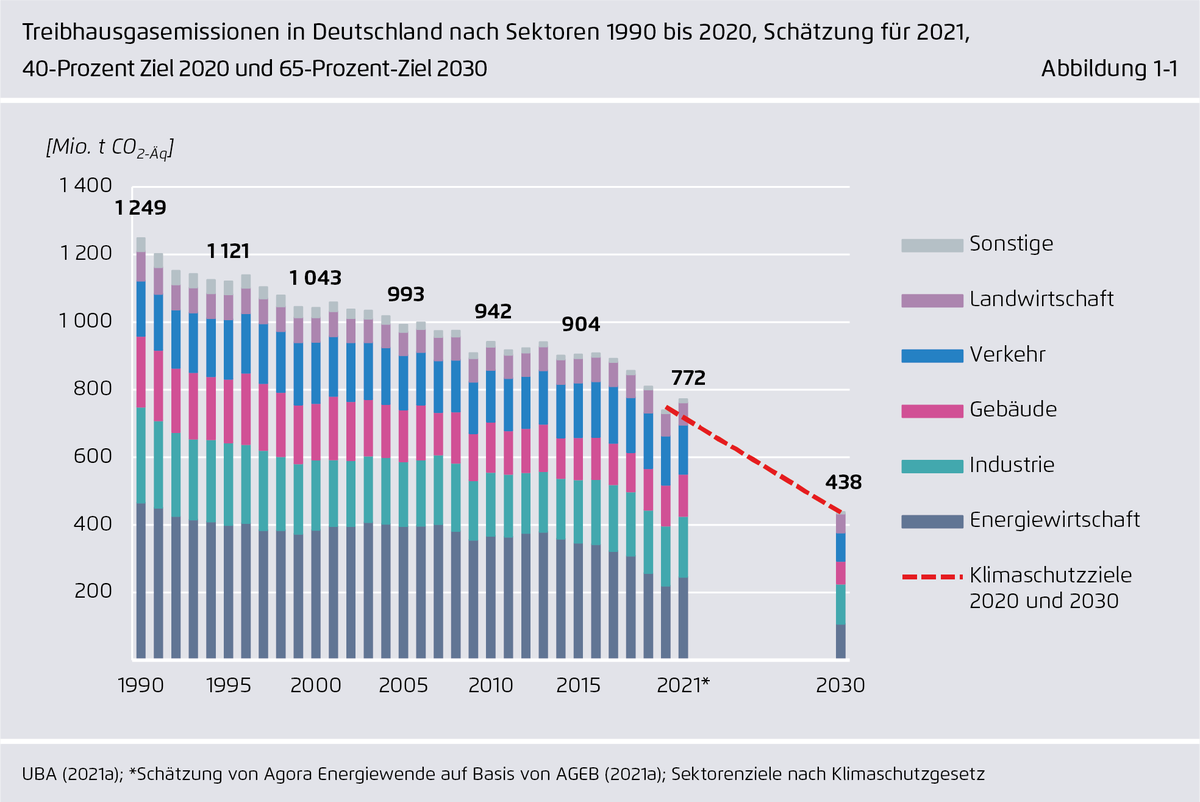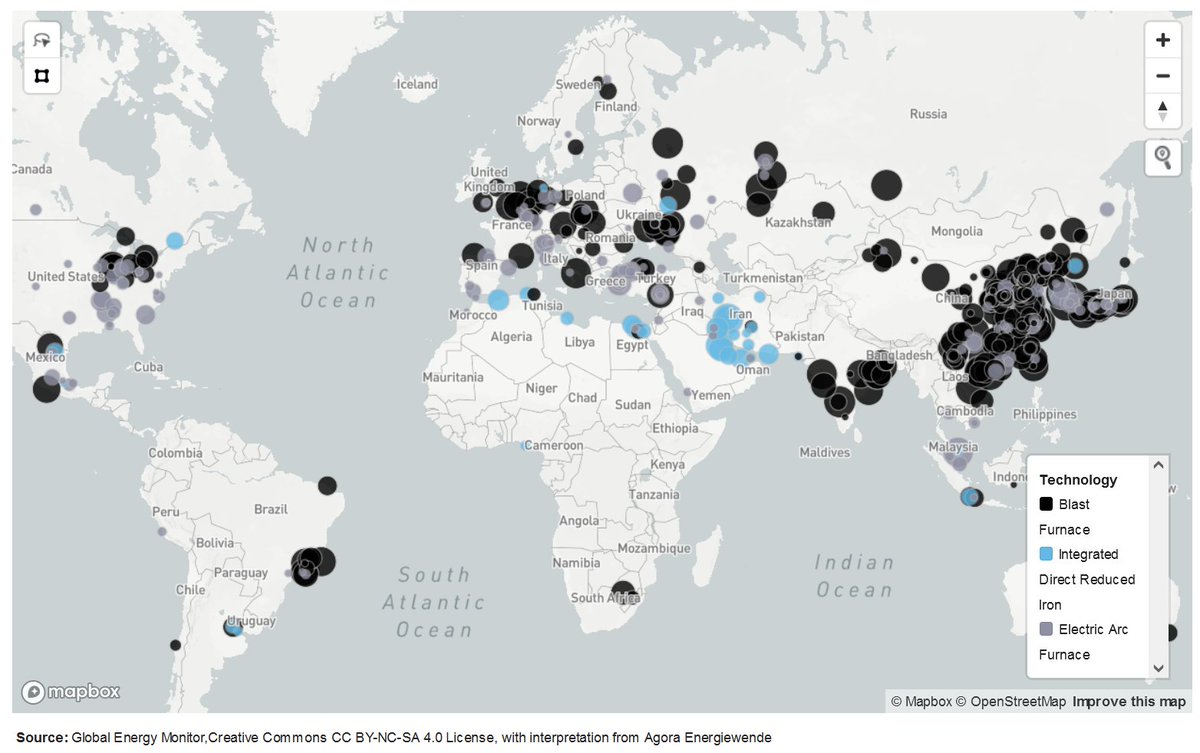
Klimabilanz 2021: Deutschlands THG #Emissionen steigen um 4,5% (+33 Mio t CO2) ➡️ #2030Klimaziel droht außer Reichweite zu geraten. Ursachen: deutlich mehr Kohlestrom, mehr Heizbedarf, teilerholte Wirtschaft, niedriger Erneuerbaren-Ausbau & Erzeugung. 1/11 

Emissionen sinken für 2030-Ziel nicht schnell genug. Deutlich zu wenig #Klimaschutz bei #Gebäude & #Verkehr, mehr Emissionen in der #Energiewirtschaft. #Industrie nur wegen Coronaeffekten auf Zielpfad. Nur Erneuerbare + Energieeffizienz bringen nachhaltige THG-Einsparungen. 2/11 

#Erneuerbare erzeugen 2021 236,7 TWh Strom (-5,4% vgl. mit 2020): ungünstigere Wetterlagen schwächen Produktion von regenerativem Strom + fehlender Erneuerbaren-Ausbau kann Minderproduktion nicht kompensieren. Hoher #Gaspreis lässt #Kohleverstromung wieder steigen. 3/11 

Stärkster Erneuerbaren-Rückgang der Geschichte (-13 TWh regenerativer Strom). Vor allem ausbleibende Starkwinde senken die #Windstrom-Erzeugung (-14,4 TWh). #PV gelingt ein leichter Anstieg dank Zubaus (+0,4 TWh). 4/11 

#Kohleverstromung feiert Comeback, erster Anstieg seit 8 Jahren➡️ 12,2% mehr #Emissionen beim Strom. Gründe: 1) Kohle übernimmt Gasanteile wegen hohem #Gaspreis, 2) #Fossile springen für EE ein und 3) mehr Strombedarf wegen wirtschaftlicher Teilerholung. 5/11 

Erneuerbaren-Zubau verbessert sich kaum, Gesamtleistung Ende 2021: 137 GW (+10%). #PV belegt beim Zubau den ersten Platz, 3/4 entfallen auf PV, der Rest auf #Wind an Land. Für 2030-Ziel muss die #BuReg das Tempo beim EE-Zubau mind. verdreifachen & Hemmnisse abbauen. 6/11 

Für das 80% Erneuerbaren-Ziel bis 2030 benötigt DE 544-600 TWh Erneuerbaren Strom. Die EE-Erzeugung muss sich innerhalb der nächsten 9 Jahre mind. verdreifachen. #PV-Ausbau-Offensive kann schon 2022 neue Dynamik schaffen. 7/11 

Starke Preisanstiege für Energie an der Börse: Erdgaspreis x11, Steinkohlepreis: x4, Strompreis x9 & CO₂-Zertifikatspreis x3. Gründe u.a. kalter Jahresbeginn, höhere Nachfrage & geopolitische Lage. #Erneuerbare dämpfen die #Energiepreiskrise & begrenzen Preisanstieg. 8/11 

2021 legt @BVerfG den akuten Handlungsbedarf offen. Noch nie war die Diskrepanz zw. Klimazielen und Emissionsentwicklung größer. Die neue #BuReg muss die #Energiewende mit wirkungsvollen Maßnahmen rasch beschleunigen ➡️ Deutsche #Klimapolitik ist nicht auf Kurs. 9/11 

Die Publikation „Die Energiewende in Deutschland: Stand der Dinge 2021“ inklusive aller Grafiken und Hintergrundinformationen können Sie jetzt auf unserer Webseite downloaden. Hier geht’s lang: bit.ly/3G5b0oG 10/11
Nicht verpassen – am 11. Januar 2022 stellen unsere Kollegen @simongmueller, @fabianhein4 und Thorsten Lenck die Zahlen der Jahresauswertung 2021 genauer vor und ordnen diese ein. Jetzt digitale Teilnahme sichern und anmelden unter: bit.ly/34vI9fl 11/11
• • •
Missing some Tweet in this thread? You can try to
force a refresh




















